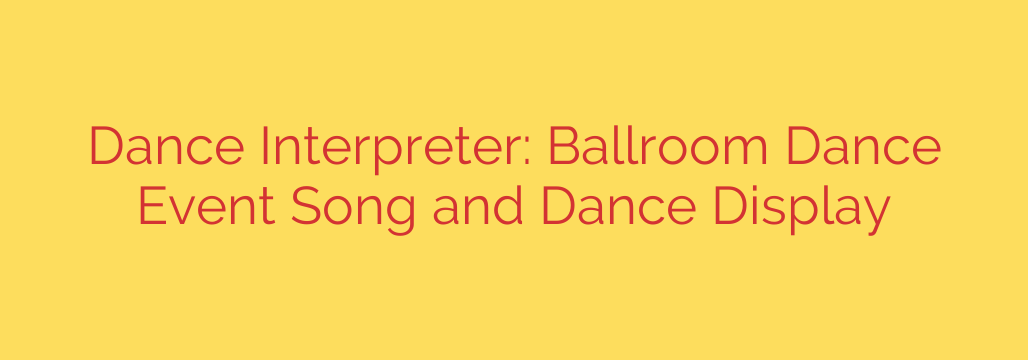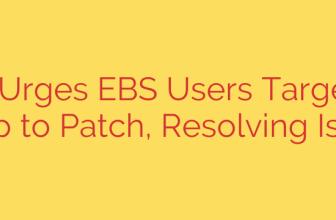
The Art of Musical Interpretation: Transforming Your Ballroom Dance Performance
What separates a good dancer from a truly captivating one? While technical precision is the foundation of all great dancing, the secret ingredient that creates a memorable performance is musical interpretation. This is the art of not just moving to the music, but embodying it—transforming a sequence of steps into a living, breathing story that an audience can feel.
Moving beyond choreography requires you to become a “dance interpreter.” It’s about listening deeply to a song and allowing its rhythm, melody, and emotion to flow through your body. This skill is what elevates a performance from a technical exercise to a powerful emotional experience for both the dancer and the spectator.
Why Musicality is the Key to a Winning Performance
In any ballroom dance event, judges and audiences are looking for more than just perfect footwork. They are looking for a connection—a partnership not only between the two dancers but between the couple and the music.
- Emotional Connection: Music evokes feelings—joy, passion, melancholy, tension. A skilled dancer translates these feelings into physical expression, creating a performance that resonates on a deeper level.
- Storytelling: Every piece of music has a narrative arc with a beginning, middle, and end. By interpreting the music, you tell its story through your movements, from gentle, flowing sways in a soft passage to sharp, dramatic lines during a crescendo.
- Dynamic Variety: Dancing to the “feel” of the music instead of just the count adds texture and excitement to your routine. It prevents a performance from feeling flat or repetitive and showcases a higher level of artistry.
A Dancer’s Guide to Deconstructing Music
To interpret a song, you must first learn to listen to it with a dancer’s ear. This means hearing beyond the basic 1-2-3-4 count and identifying the layers that give the music its unique character.
1. Identify the Rhythmic Structure
Go beyond the main beat. Listen for the underlying rhythms in the percussion, the bassline, or even the vocals. Are there complex syncopations? Are there moments where the rhythm builds in intensity or pulls back? Matching your energy to these rhythmic shifts is fundamental. For example, the sharp, staccato rhythm of a Tango demands different movement than the smooth, swinging rhythm of a Foxtrot.
2. Follow the Melody and Harmony
The melody is the main “voice” of the song. Let it guide the overarching flow and expression of your dance. The harmony—the chords playing beneath the melody—sets the emotional mood. A shift from a major key to a minor key, for instance, is a clear signal for a change in your expression from happy or hopeful to something more dramatic or somber.
3. Feel the Dynamics and Phrasing
Dynamics refer to the volume of the music. A crescendo (getting louder) is a natural opportunity to build energy, travel across the floor, or execute a larger, more expansive movement. A decrescendo (getting softer) might call for a more intimate, subtle, or controlled action. Musical phrases are like sentences; they have a natural start and finish. Dancing in sync with these phrases makes your choreography feel organic and connected to the song.
Actionable Tips for Translating Music into Movement
Understanding the music is the first step. The next is translating that understanding into your body.
- Match Movement Quality to Musical Texture: If the music is smooth and flowing (legato), your movements should reflect that with soft, connected actions. If the music is sharp and punctuated (staccato), use quick, precise, and defined movements.
- Use Highlights and Accents: Listen for the big moments in the song—a powerful drum hit, a soaring violin note, or a sudden pause. Use these accents as opportunities for a highlight in your choreography, such as a sharp head turn, a dramatic lunge, a lift, or a freeze. This shows the judges you are truly listening.
- Tell a Story with Your Entire Body: Musical interpretation isn’t just for your feet. Your arm styling, the tilt of your head, your posture, and especially your facial expressions should all reflect the character of the music.
- Practice Improvisation: A powerful training tool is to put on a piece of music you don’t know well and simply move to it without planned choreography. This forces you to listen actively and respond instinctively, which will build your interpretive skills for any performance.
Ultimately, mastering musical interpretation is a journey. It’s about developing a deep, personal relationship with the music you dance to. The next time you step onto the dance floor, challenge yourself to listen more deeply. Don’t just dance to the music; become the visual representation of the music. This is where true dance artistry is born, creating a performance that no one will forget.
Source: https://www.linuxlinks.com/danceinterpreter-display-songs-dances-ballroom-dance-events/








